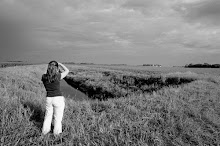The only two things I would say were the downsides was the amount of cigar smoking (which as complete non-smokers we struggled with) and the lack of opportunity to just wander since we needed to remain on an educational tour as Americans. It was an opportunity we know so many people do not have, so we are so grateful for the whole thing. A huge thank you to the MPLS Photo Center, who also have another trip going in April.
We saw all the usual things you would expect to see, like the classic cars, crumbling buildings and Socialist propaganda. There were also the friendliest people we have ever met on our travels and a more complex social, economic and political system that I am still trying to wrap my head around. It truly was fascinating. I took over 1100 photos and Jason closer to 1700.
After looking through most of the them except the film ones, I am posting some of my favorites here.
Streets of Havana
The buildings in Havana were exactly what I had seen in other photographs but you could never capture the sense of being there and looking at them. Some are being restored with new plaster and bright colors, but many are falling apart. Many have plants growing out of them and some have been cut through in the middle to create courtyards. The endless balconies and doorways were also the main spot for neighbors to hang out and yell greetings.
Cojimar
We visited this small fishing town outside of Havana because of its ties to Ernest Hemingway and was apparently the inspiration for "The Old Man and the Sea". The buildings here were much smaller than those in Havana but also much brighter and with much more room to wander.
Jose Fuster
This artist has created a section of Havana into his own personal sketchbook of tile, ceramics and painting. He has dedicated his life and his career to using his art to restoring the neighborhood in which he lives. Using donated funds, he creates homes and streets into artwork and improving the living environment of his fellow Cubans.
Vehicles
The classic cars of the 1950s from America are what most people associate with Cuba. It was a common thing to see people fixing their cars in the street, mostly with uniquely fabricated parts. There were also the Russian cars of the 1970s and 1980s. We discovered that most of the classic cars were used to transport tourists. With less than 1 million cars in the country, most people hitchhiked to get from place to place. This was a much cheaper and more reliable option than public transportation.
The People of Havana
We did carry small bills ever day to take photographs of the people. While some wanted payment to take their picture, many were just happy to see the tourists and would do it for free. Cuba had the most friendly people of any place I have ever traveled. Despite their economic hardships and isolation from the outside, they were genuine, lively and very excited to meet people and show you their country. Many invited us into their homes, showed us around their local stores and wanted to share drinks with us.
It is a rare experience for Americans to get a chance to travel to Cuba so for Jason and I, this experience has been one that has made us very grateful.

















































































